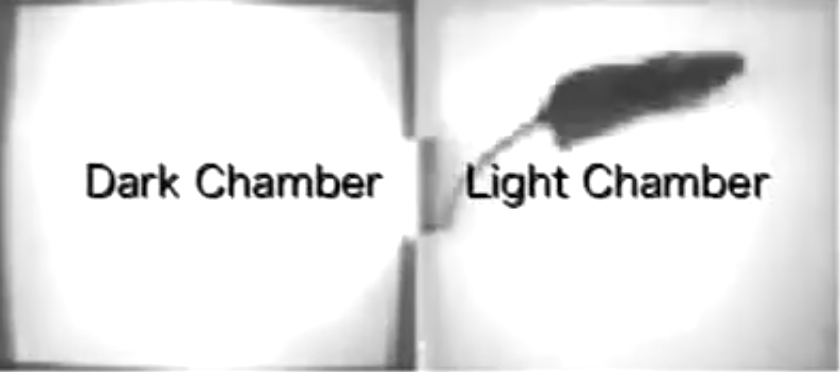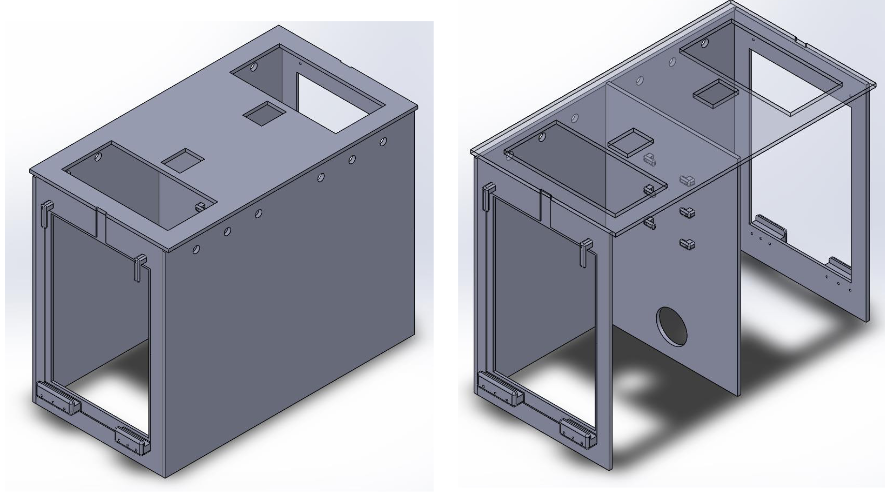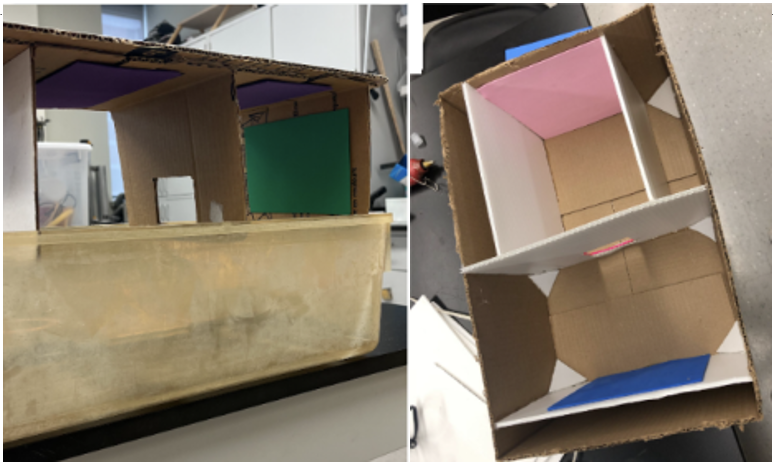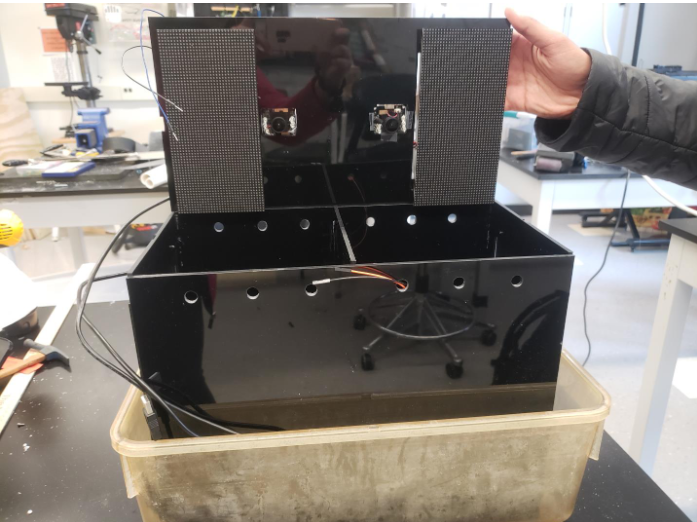Team Members
Ordered Left to Right:
Karina Bridger
Aparajeeta Majumder
Christopher Lu
Sameer Jain
Supervisor

Laurel Carney, Ph.D.
Customer

Michel Telias, Ph.D.
The Telias Lab
Description
Our team is designing an apparatus for performing behavioral research experiments on vision in mice that combines hardware and software capabilities. The apparatus will be able to present various forms of visual stimuli to a mouse, record the mouse’s resulting behavior, and analyze the changes in behavior.
Background
As per the NIH National Eye Institute, over 2.1 million Americans suffer from Age-related Macular Degeneration. Retinal degeneration disorders like Macular Degeneration are caused by the loss of photoreceptors. The Telias Lab conducts research to determine how to rescue photoreceptors from degeneration and preserve vision.
NIH National Eye Institute, 2014
In order to further study vision, the Telias Lab would like to perform behavioral studies using mice by taking advantage of their innate light avoidance behavior. Mice generally avoid light and thus if a mouse reacts to light stimulus it can be assumed that the mouse has visual capabilities to perceive the light. Thus, analyzing the behavior of mice with various levels of retinal degeneration when they are exposed to light can give insight into these visual disorders. This calls for a device that can deliver stimulus, record the mouse’s reactionary behavior, and analyze it.
Goal & Customer Scenario
The primary scenario in which this device will be used is mice behavioral and vision research for use in academic research settings. A researcher will place a mouse in the device, deliver light stimuli to the mouse through the device, capture video recordings of the mouse reacting to the light stimulus, and then analyze the mouses exact reactions through changes in position and velocity.
The goal of our design is to improve upon current models of shuttle boxes that have limited capabilities usually restricted just to providing simple on/off light stimulus and calculating the time the mouse spent in each chamber (the chamber with the slight stimulus and chamber without). Specifically, our team’s goal is to provide the Telias lab with a shuttle box that can deliver customizable light stimulus in the form of many different shapes and sequences at a wide range of wavelengths, intensities, and duration. This shuttle box should also collect video of the mouse during the entirety of the experiment and be accompanied by a software that analyzes the video and delivers data on position and velocity of the mouse throughout its time in the shuttle box.

(Takao and Miyakawa, JOVE 2006)
Design Concept
As a team we were able to develop a design that addressed all the needs and wants of our customer
The first aspect of our device is its three part design. The device has three separable components that can be easily put together for use. The base of the device is a rat cage. This rat case serves as the ground for the mouse during experimentation and can withstand cleaning via cage washer. The second component are the side walls that are placed in the rat cage. These create two separated but connected chambers for the mouse to travel between and also has spaces for monitors to be connected. The final component is the lid which is placed on top of the side walls and houses the LED arrays, cameras, and microcontroller that controls the LED arrays. This three part design is primarily for ease of cleaning and handling. The floor which takes the majority of the mouses excrement can be thoroughly cleaned with a rat cage while the side walls and lid which are made out of polycarbonate (can’t be placed in the cage washer) can be separated and wiped down with bleach or ethanol allowing for delicacy with regards to the incorporated technology. The concept can be seen below.

The second aspect of our design is the light stimulus delivery and video capture methods. Our design uses two forms methods of light stimulus delivery. The first is the LED Arrays that are suspended over each chamber through the lid. They are controlled by a microcontroller and have the capacity to provide light stimulus in the form of many different shapes and sequences at a wide range of wavelengths, intensities, and duration. The second are the monitors that face into each of the chambers. These give the customer the ability to provide any light stimulus they desire in the form of image or video. Our design also takes advantage of two cameras with IR capabilities to capture video of the two chambers. These videos are captures by the cameras and sent straight to the computer that the cameras are directly connected to.

The final aspect of our overall design is the video analysis software that accompanies the physical device. This software analyzes the video captured during the experiment frame by frame and collects data on the position and velocity of the mouse and how these data points change in relation to light stimulus delivery.
Prototyping Process
The development of our team’s device required significant prototyping and prototype testing. Our team began by crafting cardboard iterations to approximate how we would fit the pieces together and whether we wanted to incorporate certain elements or not.

From there, we began to construct more functional prototypes with corrugated plastic. These were used to incorporate the devices like cameras, LED arrays, and monitors into our prototyping process and decide on the ideal specifications like box height. These were also used as functional prototypes for testing with live mice.


Finally, we built our final product using precisely cut polycarbonate and weld on adhesive. This device was tested to make sure it satisfied our expectations regarding things like light leakage and was also tested for functionality in a live mouse test.

Feedback and Results of Evaluation
Overall, based on testing and customer feedback, our device satisfied our expectations. The device meets all of our goals and our customer is excited to use it for true data collection.
Though our device development was successful in creating a functional product, there is always room for improvement. Some of the main areas for improvement are cable management, construction specifications, and the software.
Our final product has many exposed wires and connections that can be easily perturbed unintentionally. Additionally, our final product had some construction modifications during the build process because some of the devices did not fit as we expected. Finally, our software is completely functional but not completely foolproof.
Future Directions
With more time our group would have loved to address the feedback mentioned above.
We believe future directions with this device would involve creating a cover that encases the wiring to make the final product look even more sleek and protect vulnerable connections. Additionally, we would modify the CAD and device dimensions to ensure that all the internal components fit perfectly. Finally, we would have spent more time making the code fool proof, provide more pre-set stimuli options, and made the software a little more user accessible through things like GUIs.
We believe that our customer can use this device as an initial starting point and can continue to develop the device further. It is likely possible to add further functionality on the software end through more code options that could potentially analyze the videos for more minute things like head turning etc.






